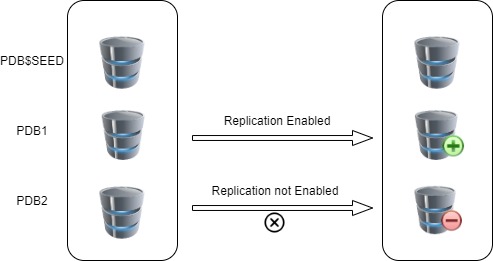ORA-65036: pluggable database PDB$SEED not open in required mode
ORA-65036 can be returned when creating a PDB using the DBCA or the command line (SQLPLUS). Background is when creating a PDB Oracle depends on PDB$SEED to get the required template for the new PDB. If the PDB$SEED is not in ‘read only’ or ‘read write’ mode ora-65036 can be returned. Below is an example where error is returned with mounted state PDB$SEED, SQL> CREATE PLUGGABLE DATABASE pdb2 ADMIN USER pdb_adm IDENTIFIED BY Password1 CREATE_FILE_DEST='+DATA'; CREATE PLUGGABLE DATABASE pdb2 ADMIN USER pdb_adm IDENTIFIED BY Password1 CREATE_FILE_DEST='+DATA' * ERROR at line 1: ORA-65036: pluggable database PDB$SEED not open in required mode SQL> show pdbs; CON_ID CON_NAME OPEN MODE RESTRICTED ---------- ------------------------------ ---------- ---------- 2 PDB$SEED MOUNTED 3 ORCLPDB READ WRITE NO SQL> SQL> alter pluggable database PDB$SEED open; Pluggable databa
